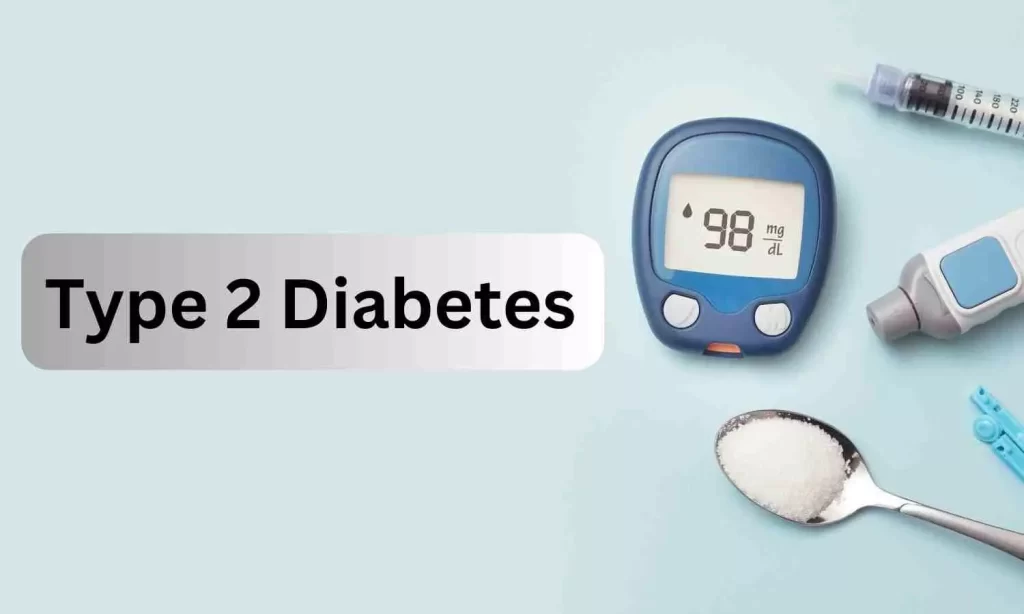Prediabetes: What It Means and How to Prevent Type 2 Diabetes

Prediabetes: What It Means and How to Prevent Type 2 Diabetes
Prediabetes is a critical early warning for type 2 diabetes. It occurs when your blood sugar levels are higher than normal but not high enough to qualify as diabetes. While prediabetes itself may not cause symptoms, it signals that your body is starting to struggle with glucose management. The good news? Prediabetes is reversible with proper lifestyle changes, giving you a unique opportunity to prevent type 2 diabetes before it develops.
What Happens in Prediabetes?
In prediabetes, the body struggles to manage glucose effectively. This occurs in two main ways:
- Insulin resistance – the body’s cells do not respond properly to insulin.
- Impaired insulin production – the pancreas cannot produce enough insulin to regulate blood sugar.
As a result, sugar builds up in the bloodstream instead of being used by the body for energy. Over time, this can progress to type 2 diabetes if not addressed.
Diagnosis Criteria for Prediabetes
Healthcare providers use three main tests to diagnose prediabetes. The following table summarizes the ranges:
| Test | Normal Range | Prediabetes Range | Diabetes Range |
|---|---|---|---|
| Fasting Blood Sugar | < 100 mg/dL | 100–125 mg/dL | ≥ 126 mg/dL |
| HbA1c (3-month average) | < 5.7% | 5.7–6.4% | ≥ 6.5% |
| Oral Glucose Tolerance Test | < 140 mg/dL (2 hr) | 140–199 mg/dL (2 hr) | ≥ 200 mg/dL (2 hr) |
Who Is at Risk for Prediabetes?
Prediabetes can affect anyone, but certain factors make some individuals more susceptible. Understanding your risk can help you take early action to prevent type 2 diabetes. Common risk factors include:
- Excess body weight: Being overweight or carrying extra fat around the abdomen increases insulin resistance, making it harder for your body to regulate blood sugar effectively.
- Sedentary lifestyle: Lack of regular physical activity contributes to poor glucose control and a higher risk of developing prediabetes.
- Family history: If diabetes runs in your family, your genetic predisposition increases your likelihood of developing prediabetes.
- History of gestational diabetes: Women who experienced high blood sugar during pregnancy are at greater risk of developing prediabetes later in life.
- Age: The risk rises after age 45, as the body’s ability to process glucose efficiently naturally declines over time.
- Medical conditions: Conditions such as polycystic ovary syndrome (PCOS), high blood pressure, or high cholesterol can contribute to insulin resistance and prediabetes.
- Ethnicity: Certain populations, including South Asian, African, Hispanic, and Native American communities, are at higher risk due to genetic and environmental factors.
Recognizing the Signs of Prediabetes
Prediabetes is often called a “silent” condition because most people do not notice any obvious symptoms. However, subtle warning signs may sometimes appear, offering clues that your blood sugar is higher than normal. Being aware of these can help you take action early.
- Unusual Fatigue: Feeling tired even after adequate rest can be an early sign that your body is struggling to use glucose efficiently.
- Skin Changes: Dark, velvety patches on the neck, armpits, or groin, known as acanthosis nigricans, may indicate insulin resistance.
- Increased Hunger or Thirst: Some people may notice an unusual urge to eat or drink more than usual, though this is less common in prediabetes.
Because these signs are subtle and easily overlooked, the most reliable way to detect prediabetes is through routine blood tests. Regular check-ups are essential, especially if you have risk factors such as family history, obesity, or a sedentary lifestyle. Early detection allows you to take control before it progresses to type 2 diabetes.
Can Prediabetes Be Reversed?
Yes, prediabetes is not a permanent condition. With the right lifestyle choices, you can slow down, stop, or even reverse it before it progresses to type 2 diabetes. The key is early action: consistent healthy habits, small but meaningful changes in diet, regular physical activity, and monitoring your blood sugar levels can make a significant difference. Think of prediabetes as a window of opportunity; your body is signaling you to take control, and the steps you take now can protect your long-term health.

Evidence-Based Strategies to Prevent Type 2 Diabetes
Preventing type 2 diabetes requires a comprehensive lifestyle approach. The following strategies are backed by research and are designed to help you manage blood sugar, reduce insulin resistance, and maintain overall health.
1. Optimize Your Diet
Eating a balanced, nutrient-rich diet is the foundation of diabetes prevention. Focus on foods that provide sustained energy, support blood sugar control, and promote overall health.
Focus on Low-Glycemic, High-Fiber Foods
- Choose whole grains like oats, brown rice, quinoa, and barley.
- Include legumes such as beans, lentils, and chickpeas.
- Eat plenty of vegetables, especially non-starchy options like broccoli, spinach, and zucchini.
- Select fruits with skin for added fiber, such as apples, pears, and berries.
Fiber slows sugar absorption, helping prevent blood sugar spikes.
Include Lean Proteins
- Options include chicken, fish, eggs, tofu, and low-fat dairy.
- Protein helps stabilize blood sugar and keeps you fuller for longer, reducing the temptation to snack on sugary foods.
Limit Refined Carbs and Sugar
- Reduce intake of white bread, pastries, candy, and sugary drinks.
- Swap them for complex carbohydrates that release energy slowly.
2. Increase Physical Activity
Exercise is one of the most effective ways to improve insulin sensitivity and lower blood sugar.
Aerobic Exercise
- Aim for 150 minutes per week of moderate-intensity activities like brisk walking, cycling, swimming, or dancing.
- Spread activity throughout the week in 30-minute sessions to maintain steady energy levels.
Strength Training
- Include 2–3 sessions per week of resistance exercises using weights, resistance bands, or bodyweight movements like squats and push-ups.
- Strength training builds muscle mass, which helps your body use glucose more efficiently.
Break Up Sedentary Time
- Take short 5–10 minute walks or stretches after sitting for long periods.
- Even brief activity after meals can reduce post-meal blood sugar spikes.
3. Achieve a Healthy Weight
Maintaining a healthy body weight is crucial in preventing type 2 diabetes.
- Losing just 5–7% of your body weight can cut your risk of developing type 2 diabetes by more than 50%.
- Focus on gradual, sustainable weight loss rather than crash diets.
- Combine dietary adjustments and regular exercise for the best results.

4. Monitor Blood Sugar and Health Markers
Regular monitoring helps you track progress and adjust lifestyle interventions when necessary.
Essential Tests
- Fasting glucose to measure baseline blood sugar
- HbA1c to evaluate long-term sugar control
- Cholesterol and blood pressure to assess cardiovascular risk
Tools for Daily Monitoring
- Use a glucometer or continuous glucose monitor (CGM) to understand how foods and activities affect your blood sugar.
- Keep a log of readings to share with your healthcare provider for better guidance.
5. Manage Stress
Chronic stress increases cortisol, which can raise blood sugar and worsen insulin resistance.
Effective Stress-Reduction Techniques
- Practice deep breathing exercises daily
- Engage in meditation or yoga
- Go for walks outdoors or pursue hobbies that bring relaxation
- Maintain social connections to improve emotional well-being
6. Prioritize Sleep
Quality sleep is essential for blood sugar regulation.
- Aim for 7–8 hours of restorative sleep per night.
- Poor sleep can increase insulin resistance and appetite, leading to weight gain.
- Address sleep disorders, such as sleep apnea, with professional help.
7. Avoid Smoking
Smoking significantly increases insulin resistance and the risk of diabetes complications.
- Seek professional support for quitting, such as counseling or nicotine replacement therapies.
- Quitting smoking can also reduce cardiovascular risks associated with diabetes.
8. Medication When Needed
In some high-risk cases, lifestyle changes may not be enough, and medication may be prescribed.
- Metformin is often used in people who are at high risk (e.g., overweight, PCOS, strong family history).
- It helps reduce blood sugar and improve insulin sensitivity.
- Medication is complementary to lifestyle changes, not a substitute.
Final Thoughts
Prediabetes is a wake-up call, not a sentence. By implementing small, consistent lifestyle changes, you can take control of your health and prevent type 2 diabetes. Acting early gives you the best chance to reverse prediabetes and live a healthy, balanced life.
Written by:
Dr. Michael Harris, MD:
Dr. Michael Harris is a board-certified endocrinologist with over 15 years of experience specializing in diabetes care, metabolic disorders, and preventive medicine. He has helped thousands of patients manage type 1 and type 2 diabetes through personalized treatment plans, lifestyle guidance, and patient education.
Reviewed by:
Linda Carter, RN, CDE:
Linda Carter is a registered nurse and certified diabetes educator (CDE) with more than 12 years of experience in pediatric and adult diabetes management. She works closely with patients and families to provide practical guidance on blood sugar monitoring, insulin therapy, nutrition, and lifestyle adjustments.
References
- National Institute of Diabetes and Digestive and Kidney Diseases. Continuous Glucose Monitoring. National Institutes of Health. https://www.niddk.nih.gov/health-information/diabetes/overview/managing-diabetes/continuous-glucose-monitoring
- National Institute of Diabetes and Digestive and Kidney Diseases. Clinical Targets for Continuous Glucose Monitoring Data. National Institutes of Health. https://www.niddk.nih.gov/health-information/professionals/diabetes-discoveries-practice/clinical-targets-for-continuous-glucose-monitoring-data
- Diabetes Daily Tips. Elderly and Diabetes: Special Care Tips. DiabetesDailyTips.com. https://diabetesdailytips.com/elderly-and-diabetes-special-care-tips/
- National Institute of Diabetes and Digestive and Kidney Diseases. Managing Diabetes. National Institutes of Health. https://www.niddk.nih.gov/health-information/diabetes/overview/managing-diabetes








4 thoughts on “Prediabetes: What It Means and How to Prevent Type 2 Diabetes”